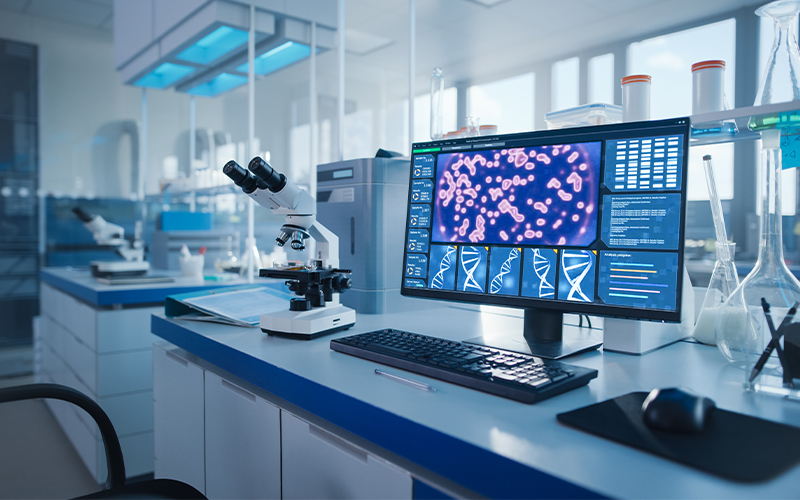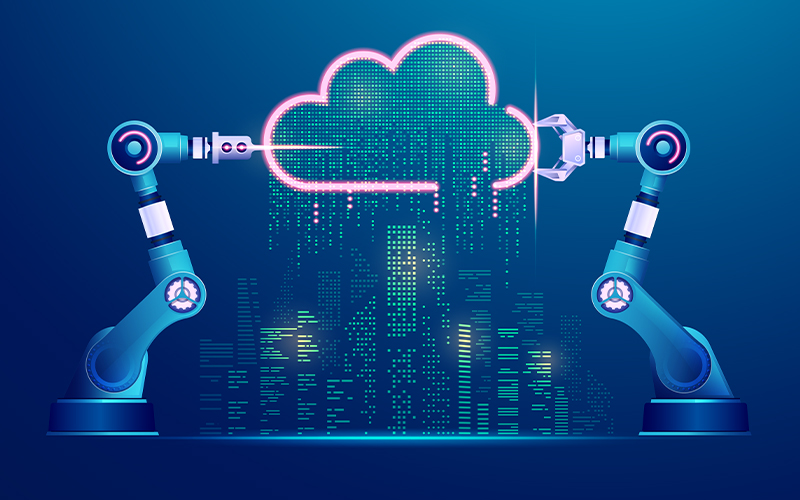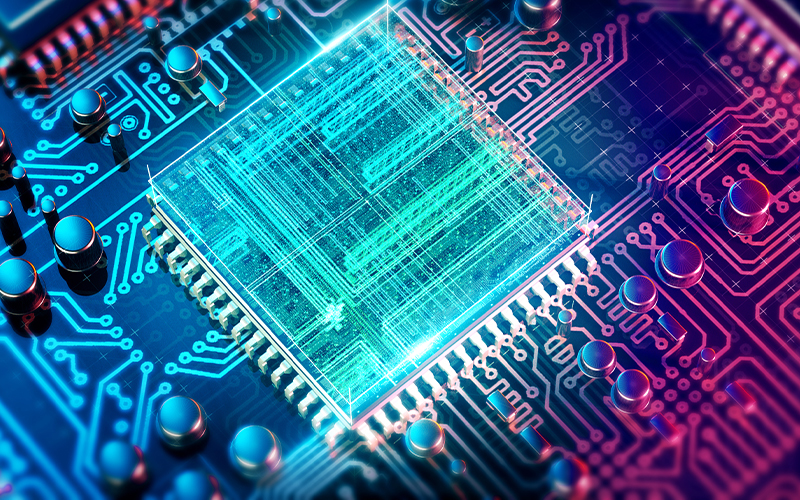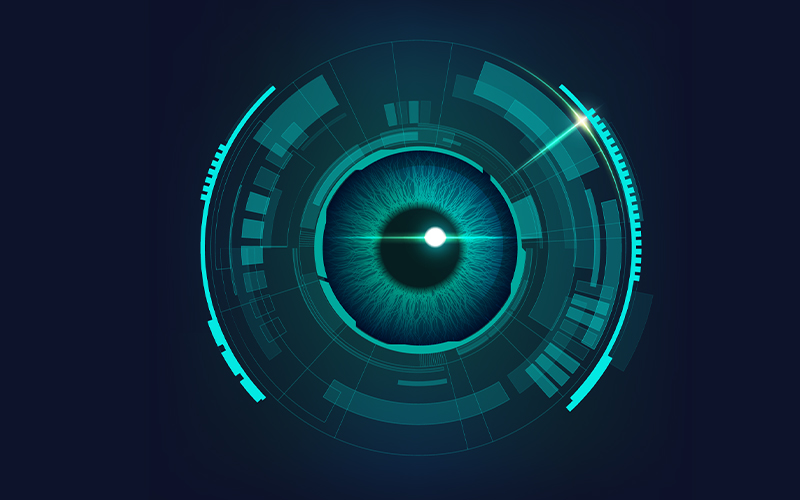BUSINESS TRANSFORMATION
Enhancing Security and Surveillance with Artificial Intelligence
How very true, is it not? Security and surveillance systems have evolved dramatically over the past few decades, from moats to burglar alarms to video surveillance to AI-based security systems. For any country, the protection of its people, homes, enterprises and the nation itself is paramount. But time and again, safety and security is threatened.
This is because where there are people, there are crime and potential security threats. Poverty, ethnicity, politics, unemployment, and a variety of other factors play a role in it. Unfortunately, these factors cannot be wished away. So, it comes down to having systems and policies to curtail the crime rate. To make security systems efficient, the foremost thing is to identify pain-points in this space.
Shortcomings in Traditional Surveillance Systems
Until AI-powered security systems hit the market, criminality was always dealt with retrospectively. This was primarily attributable to two factors:
- Manual surveillance of video footage has its limitations as it is natural for those who monitor the footage to become tired, take their eyes off the camera feed and as a result overlook clues, highlighting the need for the integration of AI in surveillance capabilities.
- The availability of surveillance technologies capable of tracking and monitoring in real time is inadequate compared to modern AI surveillance solutions. AI security systems provide much-needed real-time analytics, enabling faster identification of potential threats and reducing human error in monitoring.
CCTV cameras have been, and will continue to be, utilised to investigate crimes. However, AI technology enables us to be more proactive in identifying potential security breaches with AI security systems , organizations can anticipate security threats, detect anomalies, and provide actionable insights, which traditional surveillance systems often fail to deliver. How? During the Covid-19 outbreak, many companies spent significant time and money upgrading surveillance systems. AI-based technologies provided capabilities that were unthinkable just a few years ago. For example, using these gadgets, it is now possible to detect suspicious movements, which is a useful early warning system powered by AI surveillance. It is thus not surprising that AI-based technology is being applied to various spheres of security.
Applications of AI-enabled security systems
Road traffic safety
Fixed algorithm analytics (types of video content analytics - VCA) that detect undesired behaviour in the camera's area of view might discover indicators such as loitering or moving in the wrong direction.
However, detecting traffic violations requires a different method, which AI learning systems are better equipped for. These techniques employ enormous amounts of data to build deep neural network (DNN) models to detect traffic offences automatically and reliably, illustrating the benefits of AI in law enforcement.
Here are some examples of what AI-powered VCA can detect:
- Riding threes
- Riding without a helmet
- Driving in the opposite direction or making an unlawful turn
- Infringing on a no-parking sign
- Crossing the stop-line or jumping the signal
- Identifying the licence plate
- Driving while not wearing a seatbelt
- Using a cell phone while biking or driving
- Speeding excessively
Post-incident investigations Powered by AI Surveillance
The idea is to keep crime at bay through advanced security measures. This, however, is not always achievable. In this situation, AI algorithms combined with CCTV camera video can be really useful. For example, machine learning capabilities of colour space conversion (for example, converting from RGB to HSV) and regeneration help in comparing videos of different backgrounds. This is immensely useful while inspecting an incident as it helps to:
- Determine the model of the vehicle.
- Reconstruct a face in 3D.
- Improve video resolution.
- Cut noise and sharpen videos.
- Increase licence plate clarity.
- Search with predictive image suggestions (Enhance the search feature to include images too)
Law enforcement with AI in Surveillance Systems
Maintaining law and order is one of the biggest challenges faced by a nation, especially in the context of increasing security threats that necessitate the use of AI for effective monitoring. Burglaries and homicides happen every now and then. To identify persons of interest, it is crucial to detect and recognise faces an agile* manner, accurately and quickly.
You're probably thinking of AI facial recognition – why not? It can be used in a variety of areas of law and enforcement, including:
- Automatic authorisation of legitimate individuals
- Re-identification of unrecognised people
- Automatic notification of no-go zone violations and blacklisted/banned entries
Furthermore, AI-driven facial recognition software enables MIS reports to be customised with settings for alerts, movement, area-access and area-usage.
How do facial recognition systems identify people so precisely? They do this by extracting digital images from video footage, and comparing them to pictures from external image sources and pre-established watchlists.
Retail surveillance and AI Video Surveillance
Retail security is a huge worry because retail establishments have a lot of merchandise and heavy footfall, making them vulnerable to threats that can be mitigated through AI-driven surveillance. Shutters and doors provide minimal resistance to intruders, while security personnel are susceptible to human flaws such as fatigue and slow response times. Retail establishments require a stronger and more dependable security solution, , particularly with the rise of AI-powered surveillance systems that enhance their security capabilities.
AI-powered solutions such as item detection and abnormal behaviour recognition can be used to monitor businesses around the clock. Intelligent video analytics can detect risks of many types (weapons on individuals, unaccompanied luggage, intruders) in real-time and automatically trigger alarms to immediately draw the attention of security authorities.
For example, AI-powered systems can detect a potential shooter and notify emergency personnel in real time, demonstrating the benefits of AI in enhancing security measures. This reduces risks and keeps potentially dangerous situations from worsening.
Transportation terminals and AI Surveillance Solutions
AI-enabled technologies, like those used in retail security, can detect abandoned luggage in airports, metros, and railway stations and alert security officers to its presence.
Additionally, facial recognition algorithms and biometric tallying can make passenger identification faster and easier. This is also appropriate for border control systems.
Cybersecurity with AI in Surveillance
The volume, complexity, and creativity of cyberattacks are increasing. New malware is published almost every week and the frequency of bots stealing information is also growing. Traditional software systems are simply incapable of keeping up. However, AI can be tremendously beneficial in cybersecurity, providing robust security solutions that protect sensitive information..
AI algorithms can be trained to predict and prevent intrusions into systems. Their natural language processing capabilities enable them to curate and learn from data independently. This allows them to detect malware, run pattern recognition, and detect even the most minute malware or ransomware attacks before they enter the system.
AI systems are also useful for predicting risks. They are precise in determining IT asset inventory (a thorough record of all devices, users, and apps) and exposure to threats. Therefore, they can also forecast how and where you are most likely to be hacked, allowing you to plan and allocate resources to the most vulnerable areas.
Conclusion: The Future of AI in Security and Surveillance
A crime-free society is desirable but not practically possible. Criminal minds are continuously working and honing their craft. So, security systems must also evolve. Technology is an excellent tool for accomplishing this. Machines can always be relied on to be precise. They compensate for human shortcomings in traditional surveillance with AI surveillance systems, which significantly improve overall security. The incorporation of AI in the surveillance and security ecosystem ensures that no detail, information, or threat is overlooked. AI solutions are unquestionably the way forward for ensuring a safer environment.
*For organizations on the digital transformation journey, agility is key in responding to a rapidly changing technology and business landscape. Now more than ever, it is crucial to deliver and exceed on organizational expectations with a robust digital mindset backed by innovation. Enabling businesses to sense, learn, respond, and evolve like a living organism, will be imperative for business excellence going forward. A comprehensive, yet modular suite of services is doing exactly that. Equipping organizations with intuitive decision-making automatically at scale, actionable insights based on real-time solutions, anytime/anywhere experience, and in-depth data visibility across functions leading to hyper-productivity, Live Enterprise is building connected organizations that are innovating collaboratively for the future.







